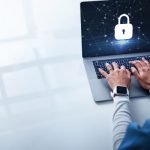Hey there, dear readers! In today’s post, we’re diving headfirst into a critical topic that’s become more relevant than ever in our increasingly digital world: malware attacks. As we navigate through and beyond the pandemic, securing our digital lives has never been more vital. So, let’s roll up our sleeves and explore five essential tips to fortify our online defenses and keep those cyber villains at bay.
Understanding the Malware Threat

Before we dive into our protective strategies, it’s important to understand what we’re up against. Malware, short for malicious software, is a broad term that encompasses various types of harmful software like viruses, ransomware, spyware, and more. These digital pests can infiltrate your devices, steal sensitive information, and wreak havoc on your digital life. But fear not – with the right precautions, you can build a sturdy digital fortress.
1. Stay Informed and Vigilant
Knowledge is power when it comes to cybersecurity. Keeping yourself informed about the latest threats and trends is your first line of defense. It’s crucial to be vigilant and stay updated on potential risks. To do this effectively, follow these steps:
Cybersecurity Awareness

Stay informed about the latest cybersecurity threats by following reputable cybersecurity news sources and government advisories. Knowledge is your armor against potential threats.
Recognizing Suspicious Activity
Learn to recognize suspicious activity on your devices. Pay attention to unexpected pop-ups, unusually slow performance, or unexplained data usage.
Use Strong, Unique Passwords
Now, let’s address one of the most common entry points for cybercriminals – weak or reused passwords. To keep your digital fortress secure, you must build robust walls.
The Anatomy of a Strong Password

A strong password contains a mix of uppercase and lowercase letters, numbers, and symbols. Avoid using easily guessable information like birthdays or common words.
Embrace the Power of Uniqueness
Using a unique password for each online account is essential. It ensures that if one password is compromised, your other accounts remain safe.
Password Managers to the Rescue

Consider using a reputable password manager to generate and store complex passwords securely. Password managers simplify the process of creating and managing secure passwords for your various accounts.
Enable Two-Factor Authentication (2FA)
Two-factor authentication (2FA) is like having a double lock on your digital doors. It adds an extra layer of security, making it significantly more challenging for cybercriminals to gain unauthorized access.
How 2FA Works
When you enable 2FA, it typically involves a second verification step, such as a temporary code sent to your mobile device or email. You must enter this code in addition to your password to access your account.
Where to Enable 2FA
Enable 2FA for your most critical accounts, such as email, financial, and sensitive online accounts. Most major online services offer 2FA as an option in their security settings.
Keep Software and Systems Updated
Outdated software and operating systems are like unlocked doors for cybercriminals. Regular updates are your best defense against these vulnerabilities.
Patching Security Holes

Software updates often include patches that fix known security vulnerabilities. By keeping your software and operating systems up to date, you’re closing these digital loopholes.
Automatic Updates
Consider enabling automatic updates whenever possible. This ensures that your software and systems stay protected against the latest threats without requiring constant manual intervention.
Beware of Phishing Scams
Phishing attacks are deceptive and widespread, often tricking users into revealing sensitive information. Protect yourself by being cautious and vigilant.
What Is Phishing?
Phishing involves cybercriminals impersonating trusted entities to deceive you into providing personal information, such as login credentials or financial details.
Identifying Phishing Attempts
Scrutinize emails for suspicious signs, including unfamiliar sender addresses, misspellings, or unusual requests. Never click on links or download attachments from unknown or unverified sources.
Verify Authenticity
If you receive an email that seems suspicious, contact the sender through another channel, such as a phone call or an official website, to confirm its authenticity before taking any action.
Bonus Tip: Secure Your Home Network
As remote work and online learning have become the new norm, securing your home network is of paramount importance. Here are some extra steps to keep your digital home safe:
Change Default Router Credentials
Start by changing the default login credentials for your router. Cybercriminals often know these defaults, making it easier for them to gain access.
Use Strong Encryption
Ensure that your Wi-Fi network is password-protected and encrypted using the latest standards, such as WPA3.
Regular Router Firmware Updates
Just like your devices, your router also needs regular firmware updates. These updates often include security enhancements that protect your network.
Conclusion
By following these five core tips and the bonus suggestions, you can significantly reduce your vulnerability to malware attacks during and after the pandemic. Protecting your digital life is an ongoing effort that pays off in the long run, ensuring your online activities remain safe and secure.
Remember, it’s your digital kingdom, and you hold the keys to its protection. Stay informed, stay vigilant, and keep those cyber villains at bay!








